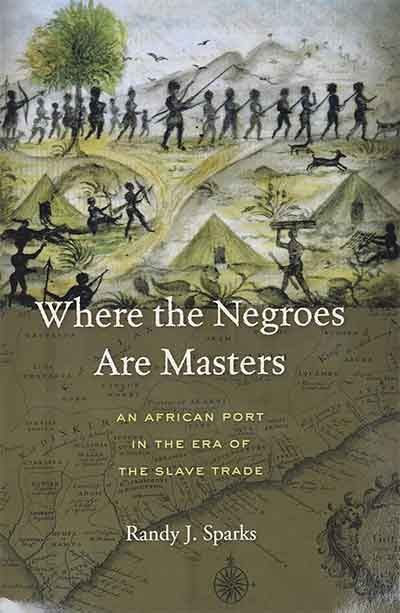Harvard University Press presents Where the Negroes are Masters: An African Port in the Era of the Slave Trade, by Randy J. Sparks. Cambridge, MA: 2014, 328 pages, $26.70.
In Where the Negroes Are Masters, historian Randy Sparks brings to the fore in detail the story of an eighteenth-century African Gold Coast slave-trading-port by the name of Annamaboe (situated in present-day Ghana). The author outlines, in elegant prose punctuated by historical evidence, the settlement’s zealous profitmaking activity and its endemic brutality by revealing the lived practices of the commercial elite (both African and European alike), who lorded over and thrived upon a primitive capital accumulation brought forth by the vicious and insidious trafficking of human beings.

The point of this book, which reads like a historical novel, is to lay bare the “organized destruction” and/or “profit above all else” mentality and systemization that undergirded a mixed-race milieu and hitherto generally unknown multiracial class dynamic – which helped formulate the brutal Atlantic Slave Trade. Most readers will not only be shocked by the tales told, but also impressed by the sheer volume of supportive historical evidence provided – which can be described as up close and personal. As Sparks states in his introduction, “This book listens to those individual notes and seeks to understand the history of Annamaboe by focusing on the people of Africa … [those] who lived, worked and traded there” (p.4). Delving deeper into the historical record, Sparks relies heavily on esteemed primary source collections like, The English in West Africa, 1691–1699 edited by Robin Law; L. F. Rømer’s, A Reliable Account of the Coast of Guinea (1760); and, the UK National Archives – just to name a few.
By way of the cultural, commercial, and personal encounters that were nurtured by profiteers and elites alike throughout locations typified by Annamaboe, this book brings forth a novel impression of the early modern Atlantic world. Furthermore, this study exposes the fact that far from being mere pieces moved on a chessboard by foreign powers, elite African men, and women (due to their distinctive negotiation skills) played a key strategic role in the intricately woven networks of the Atlantic Slave Trade – by examining how Annamaboe became the center of Atlantic commerce, Sparks throws the despair, greed, and grief of this slaving realm into stark relief.
The author’s spotlight shines intently on a privileged class of African slave traders that were tied into, and benefited from, an intricate web of connections to their European counterparts. Within this complex multifaceted slave trade, Sparks focuses on a hitherto unknown character by the name of John Corrantee. Corrantee, as portrayed, stood above all others: an African nobleman at the center of slave commerce. As a fulcrum elevated above belligerent African slave extractions (amongst his coastal people the Fante and the hinterland Asante tribes), Corrantee was able to produce the valuable bodies necessary to appease his European business partners. As Paul Ocobock observes, “Through skillful, often devious, diplomatic, military, and commercial maneuvering, Corrantee brought prosperity and strategic importance to the Fante of Annamaboe.”[1] Clearly, Corrantee’s life was inextricably intertwined with English slave profiteers.
Finally, Where the Negroes Are Masters is an important contribution to the study of slavery, yet, at the same time, the writing style is geared more toward a general audience rather than a scholastic one. Thus, the author could have provided a clearer definition of terms to assist students of interest. To assume that the Fante are universally well-known is a mistake; the point being: clarity of terminology is essential in history writing. In addition, there is some needless reiteration throughout the tale, the saga of an African prince (Corrantee’s son William) with which the volume begins is repeated later in the book verbatim. A more careful proofreading would have remedied these shortcomings in what is otherwise a significant and thought-provoking work. Lastly, a further examination of how the establishment of an interracial class-stratified elite ideology directly influenced the vicious sociological and cultural norms developed later in the Americas would have been instructive to all.
Stephen Joseph Scott is an essayist associated with The University of Edinburgh, School of History; singer/songwriter, and performer.
[1] Paul Ocobock, “Where the Negroes Are Masters: An African Port in the Era of the Slave Trade,” Canadian Journal of History 51, no. 3 (2016), 660.















































